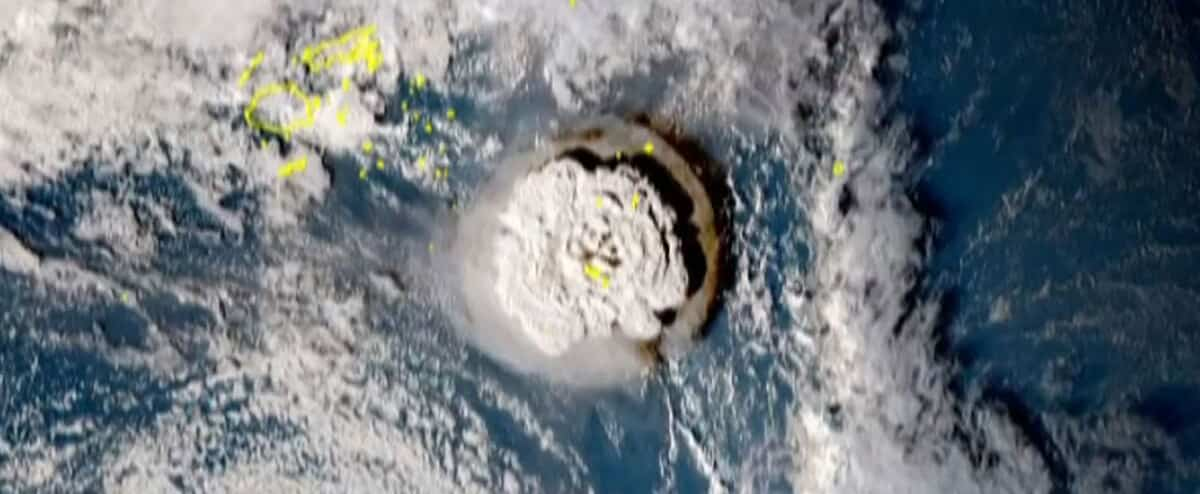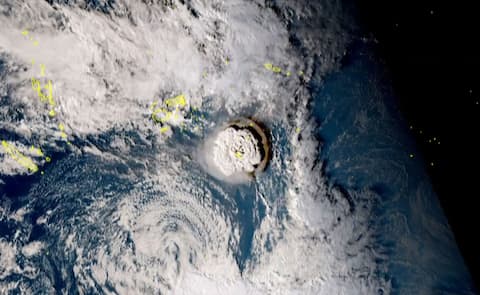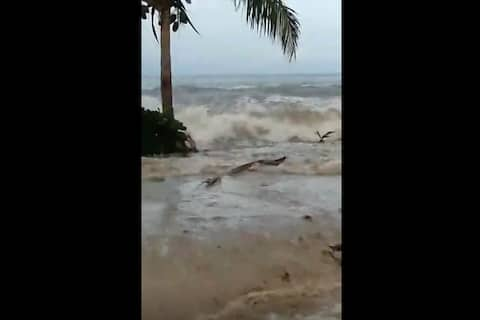The eruption of an undersea volcano off an island in the South Pacific caused a tsunami on Saturday in the Tonga Islands that reached Japan with waves of 1:20, and Chile and the west coast of the United States were also put on alert.
• Read also: Arctic cold this weekend and winter storm starting the week
Stunning views from space showed the timing of the eruption on Friday of the Hong Tonga Hong Hapai volcano, on one of the uninhabited Tonga islands: a huge mushroom of smoke and ash, and a wave immediately erupted.
The explosion lasted eight minutes, and was so powerful that it was heard “like distant thunder” over the Fiji islands, more than 800 kilometers away, according to officials in the capital, Suva, where images circulated on social media showed a huge number of waves hitting the shore.
The volcano, located 65 kilometers from the Tongan capital of Nuku’alofa, caused a 1.20-meter tsunami there, according to the Australian Bureau of Meteorology.
In Japan, the remote island of Amami Oshima was hit around 11:55 pm local time (2:55 pm GMT) on Saturday with a wave of 1.20 meters. A tsunami warning has been activated, and the National Weather Service has warned of possible three-meter waves.
“It was a huge blast,” Tonga resident Meri Taufa, who was at home at the time, told the Stuff news site.
“The ground shook, the whole house shook. It came in waves. My younger brother thought bombs were exploding near our house. A few minutes later, the water swept through their house, and she saw the wall of a nearby house collapse.”
Evacuation of the King of Tonga
“We knew right away it was a tsunami, with this water flowing into the house. You could hear screams everywhere, and everyone started fleeing to higher ground.”
The King of Tonga, Topo VI, was evacuated from the royal palace at Nuku’alofa and moved to a villa far from the coast.
Victoria Keough, of the Tonga Public Utilities Commission, called on people to “keep away from all places at risk, namely beaches, coral reefs and all the flat coasts”.
The authorities have also advised all residents to stay indoors as much as possible, wear masks if they have to go outside, and protect all water supplies there as well.
Tsunami warnings were issued for Fiji, Samoa, New Zealand, Vanuatu, Chile and Australia as authorities warned the wave could hit the coast, including Sydney.
And in Chile, a tsunami warning was issued for the regions of Coquimbo (central and north), Los Rios and Los Lagos (south), where waves exceeded one meter. In other places, the differences were between 30 cm and 1 meter. The National Emergency Office also warned of the possibility of a “minor tsunami” to hit Easter Island.
In Ecuador, authorities recommended suspending coastal activities until 5 pm local time (2200 GMT) and until 3 pm (2100 GMT) in the Galapagos as sea levels rose by 50 cm on Santa Cruz island. Then the same level of 50 cm was observed on several beaches on the coast of the mainland, where a tsunami warning was issued.
“Leave the beaches”
In the United States, tsunami warnings have been issued for the country’s west coast. Hawaii, the American archipelago in the North Pacific, has been hit by “minor floods”.
The National Weather Service recommended “leave beaches, ports and marinas” in affected areas, stressing “with satisfaction” that the Hawaiian Islands have not reported damage.
The NWS said California, Oregon and Washington states could be affected, as well as Alaska and the Canadian province of British Columbia.
The Meteorological Service warned that “the main expected impacts are strong rip currents and flooding in coastal and low-lying areas.”
See also…

“Extreme twitteraholic. Passionate travel nerd. Hardcore zombie trailblazer. Web fanatic. Evil bacon geek.”



